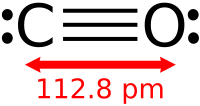
Photo from wikipedia
An effective electrocatalyst was generated through the hybridization of graphene with ZnO. First, a proper amount of graphene oxide was used to cover the ZnO nanoparticles. Then, the composite of… Click to show full abstract
An effective electrocatalyst was generated through the hybridization of graphene with ZnO. First, a proper amount of graphene oxide was used to cover the ZnO nanoparticles. Then, the composite of ZnO and graphene (ZnO/RGO) was produced through the in situ reduction of graphene oxide. The obtained ZnO/RGO composite was employed to determine Cu(II), Cd(II), Hg(II) and Pb(II) in aqueous solutions. The limits of detection for Cu(II), Cd(II), Hg(II) and Pb(II) were measured to be 0.04 μM, 0.03 μM, 0.06 μM and 0.03 μM, respectively, which are remarkably lower than the guideline values set by the World Health Organization (WHO).
Journal Title: International Journal of Electrochemical Science
Year Published: 2017
Link to full text (if available)
Share on Social Media: Sign Up to like & get
recommendations!